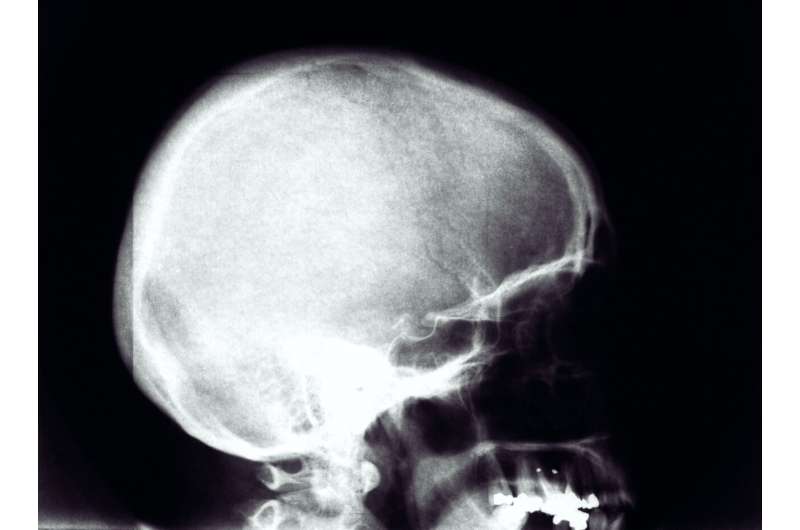Credit: Unsplash/CC0 Public Domain
A new dual delivery system designed to sequentially release BMP2 and IGF1 in microparticles in an injectable hydrogel successfully healed an 8-mm cranial defect in rats. The study design and results are reported in the peer-reviewed journal Tissue Engineering, Part A.
Cranial bone defects of a critical size cannot repair spontaneously, and affected patients ultimately require surgical reconstruction of the cranial bone. Experiments have shown that bone morphogenetic protein2 (BMP2)-laden hydrogel can promote cranial bone defect healing after implantation in rats. Insulin-like growth factor1 (GF1) is another growth factor that exerts a cell proliferation and differentiation effect on bone cells.
In this study, Yunzhi Peter Yang, Ph.D., from Stanford University School of Medicine and co-authors examined the sequential release of BMP2 followed by IGF1 in microparticles in injectable hydrogels in a rat model of cranial bone defect healing.
The investigators reported that microparticles containing BMP2 (2 µg) or a combination of BMP2 (1 µg) and IGF1 in the hydrogel successfully restored the 8-mm diameter cranial defect as early as 4 weeks after implantation. "It suggests that supplemental IFG1 (1 µg) to the lower dose of BMP2 (1 µg) could be as effective as higher dose of BMP2 (2 µg)," state the investigators. "Considering possible side effects of BMP2 in high doses, a supplemental IFG-1 may reduce the use of BMP2, which helps in minimizing the risk of causing side effect."
"Dr. Yang and colleagues beautifully demonstrate the utility of a dual release microparticle system as an emerging technique for cranial bone regeneration. Further, their results show that the use of two potent growth factors in a sequential delivery system allows for a reduction in dose, potentially mediating off-target effects—a critical advance in the field of tissue engineering," says Tissue Engineering Co-Editor-in-Chief John P. Fisher, Ph.D., Fischell Family Distinguished Professor & Department Chair, and Director of the NIH Center for Engineering Complex Tissues at the University of Maryland.
More information: Youngbum Park et al, Dual delivery of BMP-2 and IGF-1 through injectable hydrogel promotes cranial bone defect healing, Tissue Engineering Part A (2022). DOI: 10.1089/ten.TEA.2022.0002
Provided by Mary Ann Liebert, Inc






















